Caring for hydrangeas in pots: container growing made easy
Our advice on caring for hydrangeas in pots will make it easy to add these beautiful blooms to your container display

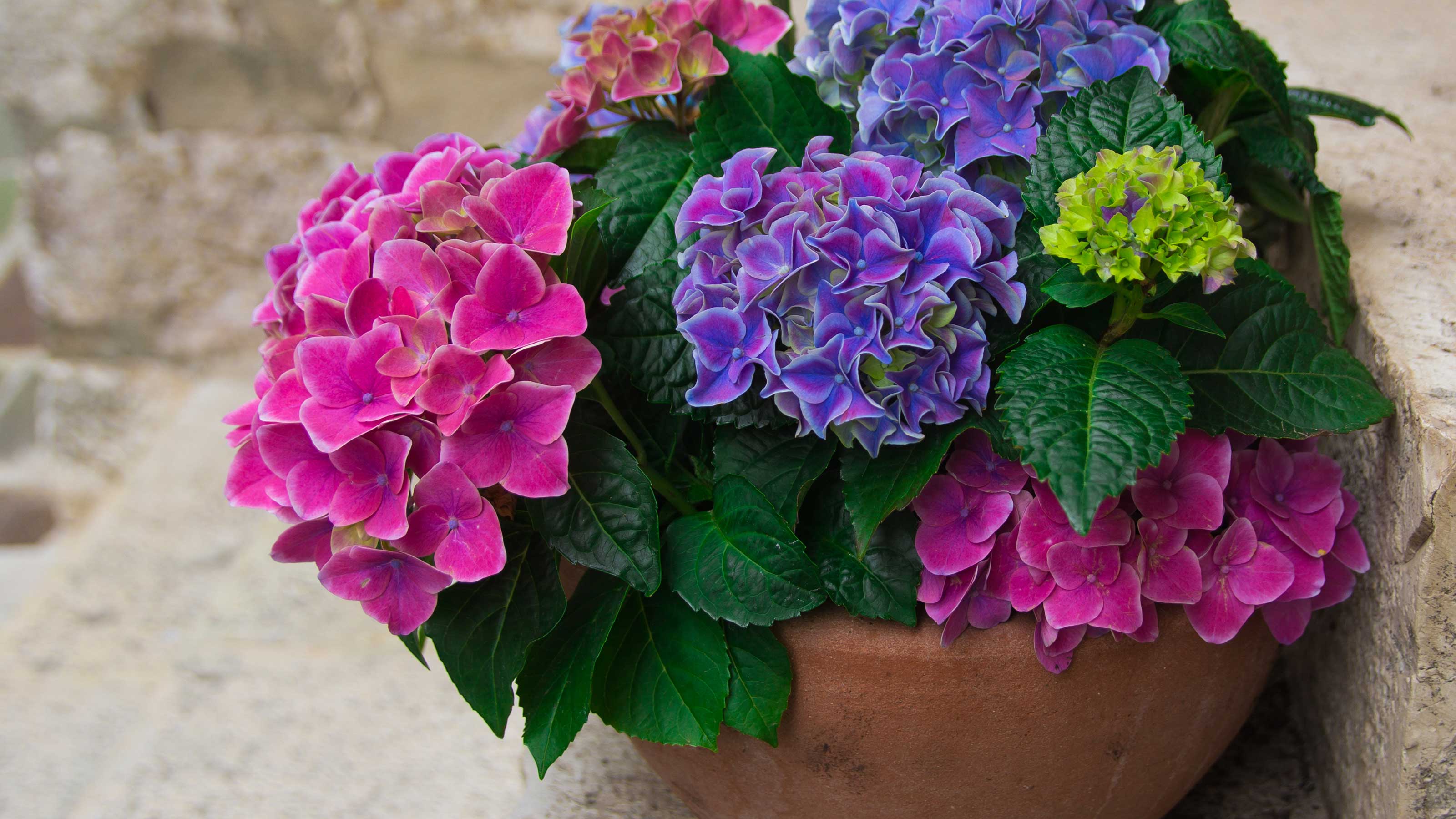
Caring for hydrangeas in pots is simple and a great way to add stunning color and structure to a patio or deck. And they complement all types of garden styles – from cottage gardens to modern plots.
If you've already read up on how to grow hydrangeas, you'll know that these plants thrive in organically rich soil that doesn't dry out in summer. For this reason, they are generally happiest planted directly into the ground, as containers tend to dry out much quicker.
However, that doesn't mean to say you can't still create a beautiful container display with these blooms. You just need to ensure that you give them the right care, pick your compost carefully, and position them in the right place. Some varieties are more suitable for these conditions too. Our guide explains all you need to know about caring for hydrangeas in pots.
What compost should you use when caring for hydrangeas in pots?
'The best potting compost for shrubby plants is one with a high proportion of loam, such as John Innes No.3,' says John Negus, garden expert for Amateur Gardening. For hydrangeas, the RHS recommends using a mix of two parts of John Innes No.3 and one-part peat-free multipurpose compost. Alternatively, if you are growing blue hydrangeas and want to keep their color vibrant, use an ericaceous compost.
However, 'even the best multi-purpose composts only have enough nutrients for four–six weeks of growth, and once this is exhausted, plants will need supplementary feeding, either with a liquid or by top-dressing with controlled-release fertilizer,' says John. Feed with a liquid from early summer until the end of flowering or top-dress in early summer.
'Loam-based composts hold on to moisture better than peat-based ones,' continues John. 'But, all potted plants need watering regularly, unless it rains a lot every day, as their roots are constrained and their compost is covered by foliage.'
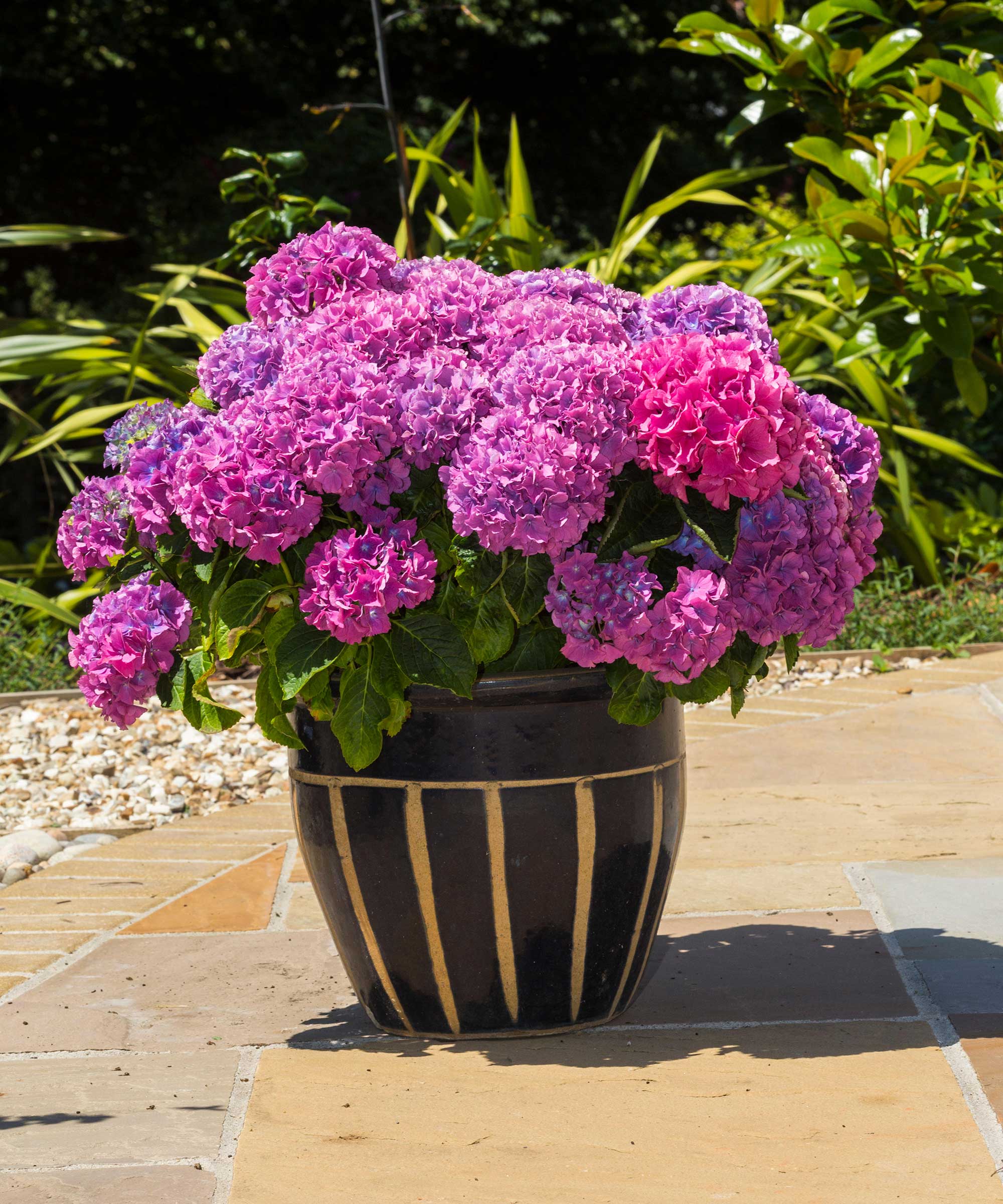
Where should you position a potted hydrangea in your garden?
Whether you're landscaping with hydrangeas in pots or planting them straight into the ground, they do best in dappled shade.
If you don't have these conditions in your backyard, try to place your potted hydrangea somewhere that gets sun in the morning and shade in the afternoon – this will help prevent the soil from drying out.
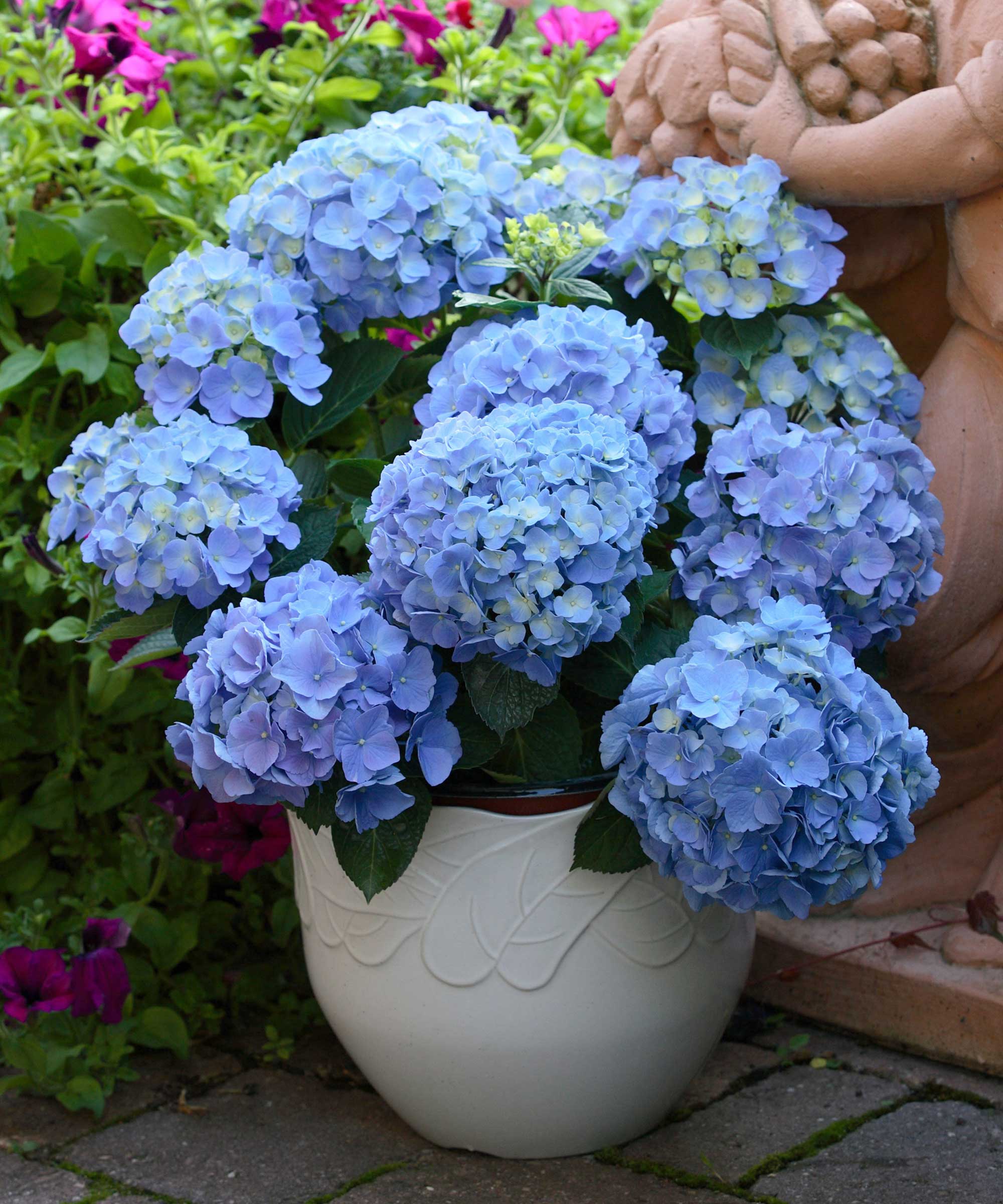
Should you protect potted hydrangeas in winter?
In winter, keep your potted hydrangeas in a sheltered part of the garden and drape them with fleece if sub-zero temperatures are forecast, advises John Negus. Remove fleece when the temperature rises. It is also a good idea to leave the old flower heads on over winter to protect the buds underneath.
'In mid-spring, move them away from the shelter and into the wider garden,' he continues. When the soil temperature begins to rise, feed them with a balanced fertilizer.
There are more tips on protecting plants from winter in our dedicated guide.
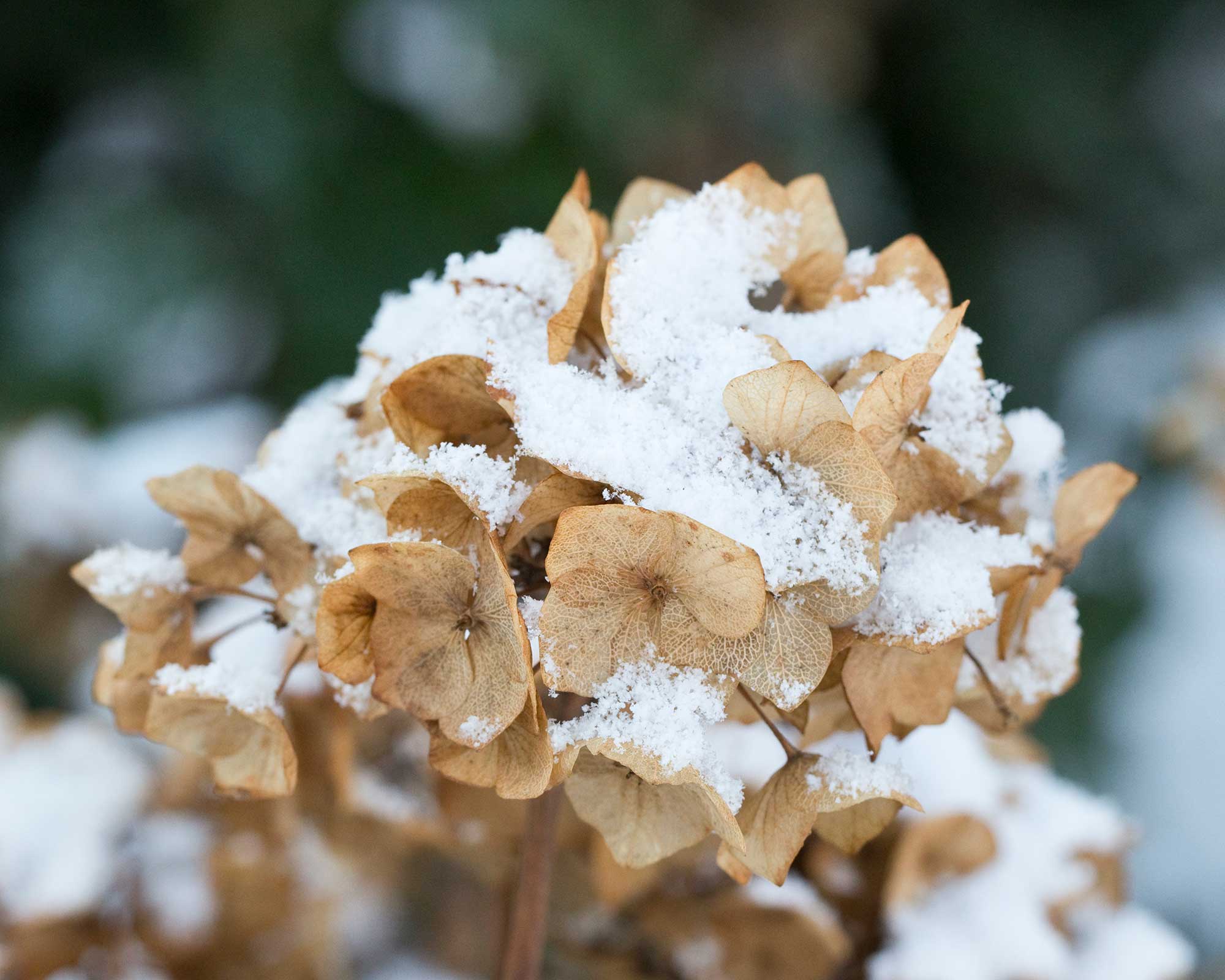
How do you repot a hydrangea?
To keep them healthy, hydrangeas will need re-potting when they outgrow their pot. This tends to be every one or two years.
To do so, carefully remove yours from its existing container in autumn, once it has finished flowering. Choose a new garden planter that is around an inch or so wider in diameter than the old container, ensuring it has drainage holes, and plant it at the same depth as previously.

Do you need to prune a potted hydrangea?
Pruning hydrangeas is important to keep them flowering well. This is the case wherever they are planted – pots included.
It's generally best to approach this garden job in spring. The correct method varies according to which species of hydrangea you have.
'For the popular mopheads and lacecaps, the flowering shoots grow from wood produced during the previous season, and it is important that this is not removed,' says John Negus. 'In mid-spring remove the dead flower heads, cutting back to the nearest pair of large, healthy buds.'
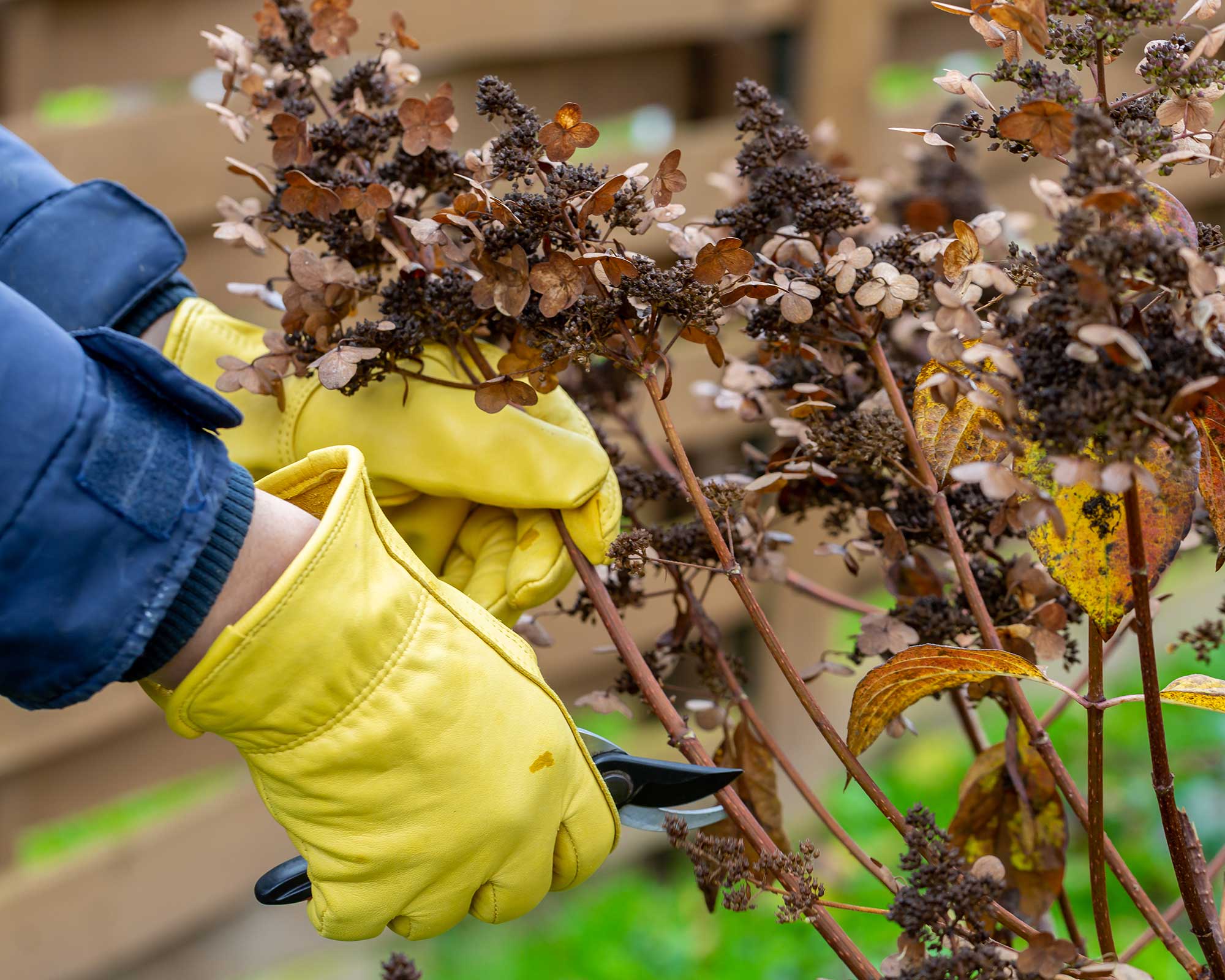
What are the best types of hydrangea to grow in pots?
There are many compact varieties of hydrangea that are best suited for your container gardening ideas.
The RHS recommends Hydrangea macrophylla 'Red Hot Violet' – which has bold deep-pink blooms – and 'Altona'. Hydrangea macrophylla 'Fireworks', meanwhile, is a pretty lacecap variety with white, star-shaped florets, that also does well in pots.
Hydrangea paniculata 'Little Lime' is another lovely choice when growing hydrangeas in pots. It's a smaller version of the popular 'Limelight' that's perfect for smaller backyards.
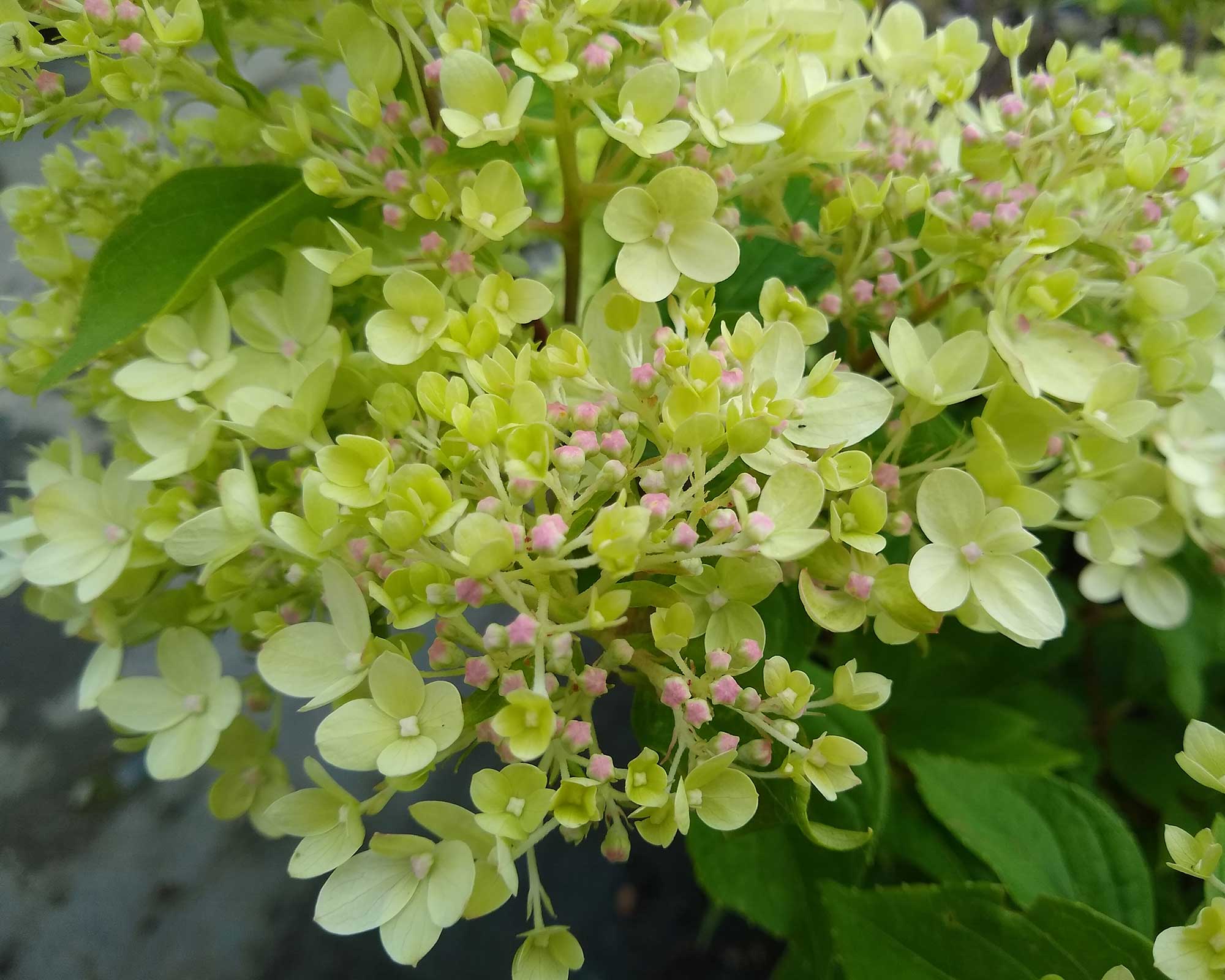
Can you plant a potted hydrangea out into a border?
It's simple to plant your hydrangea into a flower bed or border if you decide to switch up the display.
Plant it somewhere where the soil is rich, fertile, free-draining, and easy to work, says John. 'If possible, choose a sunny or lightly shaded spot where the soil stays moist in summer. Ideally, before planting, work in moisture-retentive well-rotted garden compost or old, crumbly manure.
'After tapping the root ball from its pot, tease out matted and encircling roots and set the plant in a hole three times the width of the root ball.'
Water copiously after planting and for several weeks thereafter to help the plant re-establish well. Then, monthly, from mid-spring to early autumn, sprinkle the root area with fish, blood and bone meal and gently work it into the soil. Water it in if the ground is dry.

The garden was always a big part of Holly's life growing up, as was the surrounding New Forest where she lived. Her appreciation for the great outdoors has only grown since then. She's been an allotment keeper, a professional gardener, and a botanical illustrator – plants are her passion.
